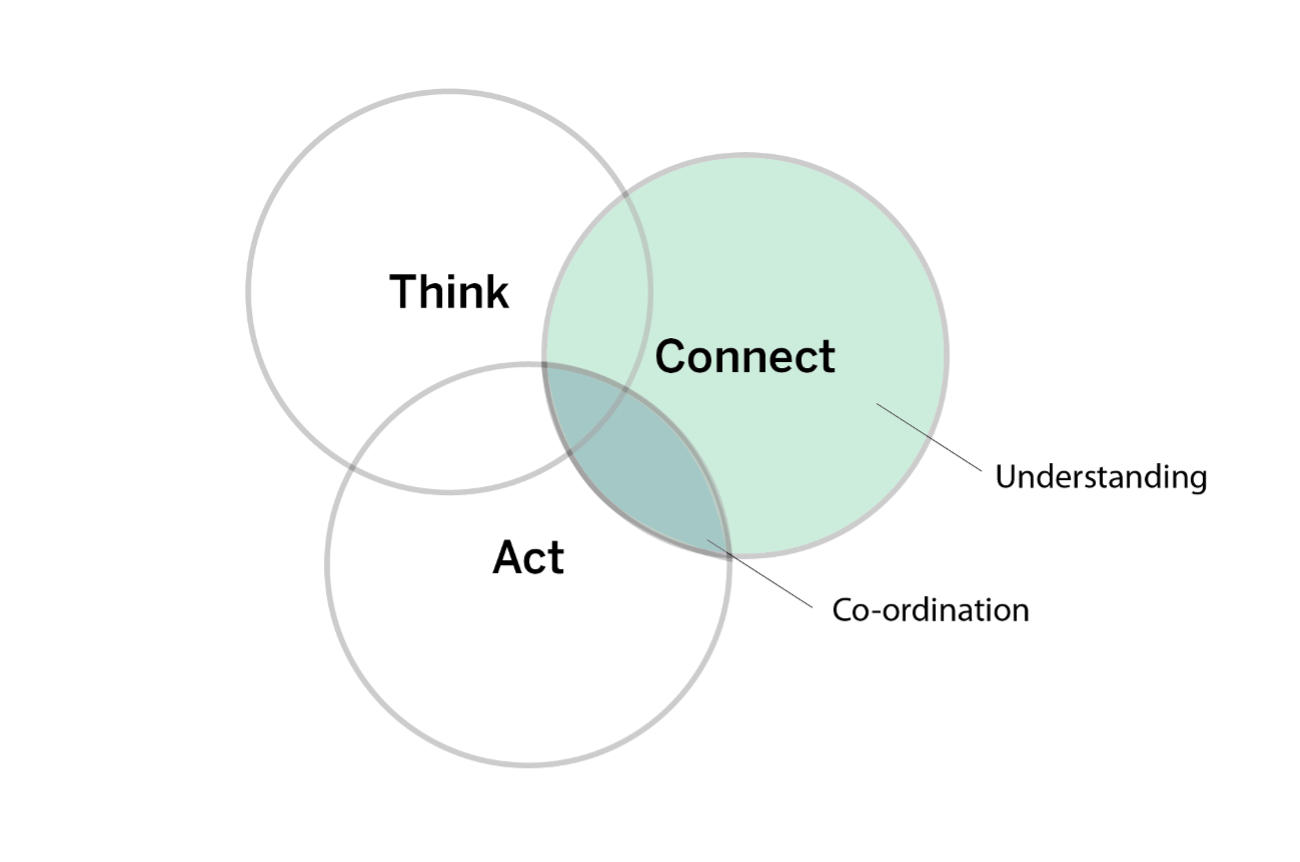Think. Connect. Act: Connection Creates Context
If we didn't have to worry about anyone else, complexity wouldn't be an issue.
Complexity is a direct result of differing agendas and worldviews. The context of the project – the processes, the hurdles, the politics, the rules of the game – are social constructs.
Whether we realise it or not, we create the complexity.
The upside of this is that, because we create the context, we also have the power to influence it. The ease (or difficulty) with which we navigate the complexity is shaped entirely by the quality and nature of the relationships we build.
The ability to get others to pay attention and adopt new ways of working depends on the context we create.
Connecting is part of the work
My previous newsletter Think Connect. Act – That’s the Work introduced three fundamental roles of work. This second edition of the series dives into the significance of connection – to both understand the situation and co-ordinate action.
In complex environments, no individual holds the entire picture. We need to engage with others, particularly those with diverse views, disciplines and experiences to make sense of the whole.
Without active engagement, crucial pieces of information can remain isolated beyond your view, perspectives clash, and coordinated action becomes nearly impossible.
It is only operating with others that we can create something bigger than ourselves. We've all experienced that magic of the late-night project where everything clicks or being part of a community club raising funds for a charity. We are at our best when we're coordinated in action.
If you want to go fast go alone. If you want to go far go together – African proverb
Connection is the work between the work
We often treat connection as a simple checklist item: sending an email, giving an update, or running a meeting.
But connection is more than information. It’s about trust, curiosity, and discovering what’s not being said. If you don’t keep in contact with everyone, the context gets away from you.
Spending time with people and having the humility to connect with their world view is how you know what is really going on. When the connections are strong, trust and momentum builds. When they’re weak, you get lots of friction.
Signals you need to reconnect
How do you know when your connections are faltering?
People say yes in meetings but block progress later
Frustration is growing, but no one’s saying it out loud
You’re hearing “we weren’t consulted” even though you are sure they were
You get nods of agreement but wonder if we are agreeing to the same thing
A red flag I often see in projects is when a project manager declares, "We all know what to do, we just need to go and do it." I can guarantee that language is a veneer over a divergence in understanding and action.
Conversely, high levels of contention do not mean there is a problem with connection. Active debate and disagreement can be a sign of a well-functioning team that are willing to raise and address difficult issues head-on.
Questions to reflect on:
A common mistake is underestimating our ability to change the context. We often have more power than we realise.
Where in your work do you feel the context is not working for you?
Who do you need to reconnect with to gain a complete picture
Does your project suffer from shallow connection disguised as agreement?
How could you change the rules of the game with the help of others?
Real connection is human and messy. When someone suggests we "address the elephant in the room," pause and consider whose elephant is it anyway?
When people feel truly connected, they’ll move forward - even into uncertainty.

